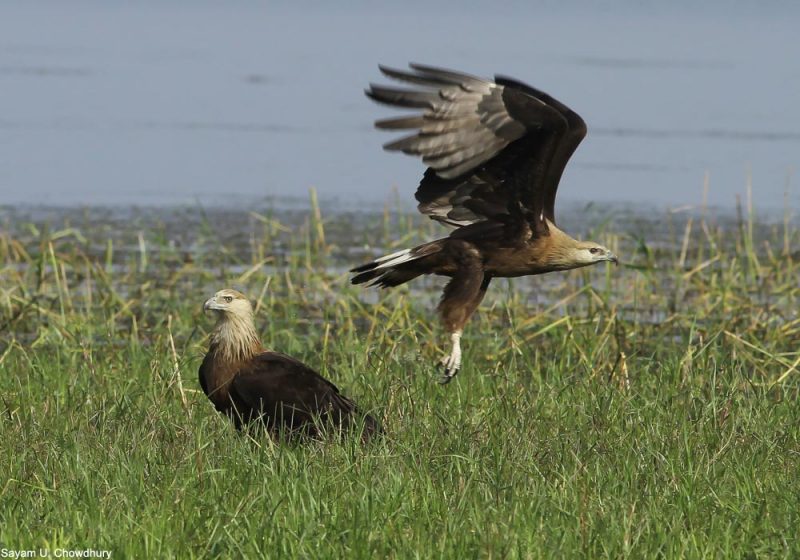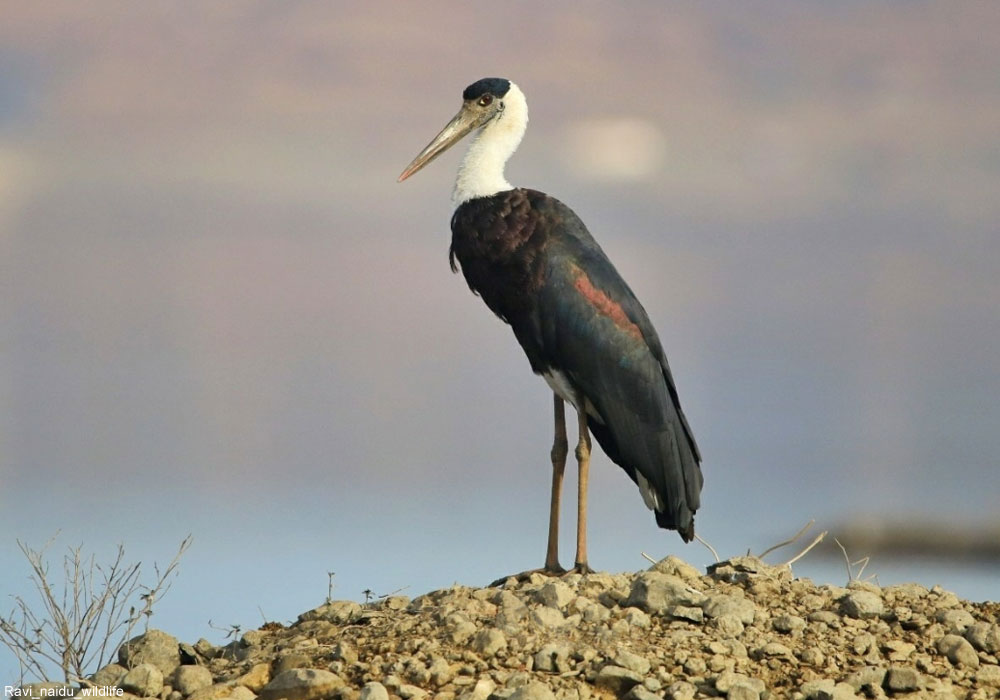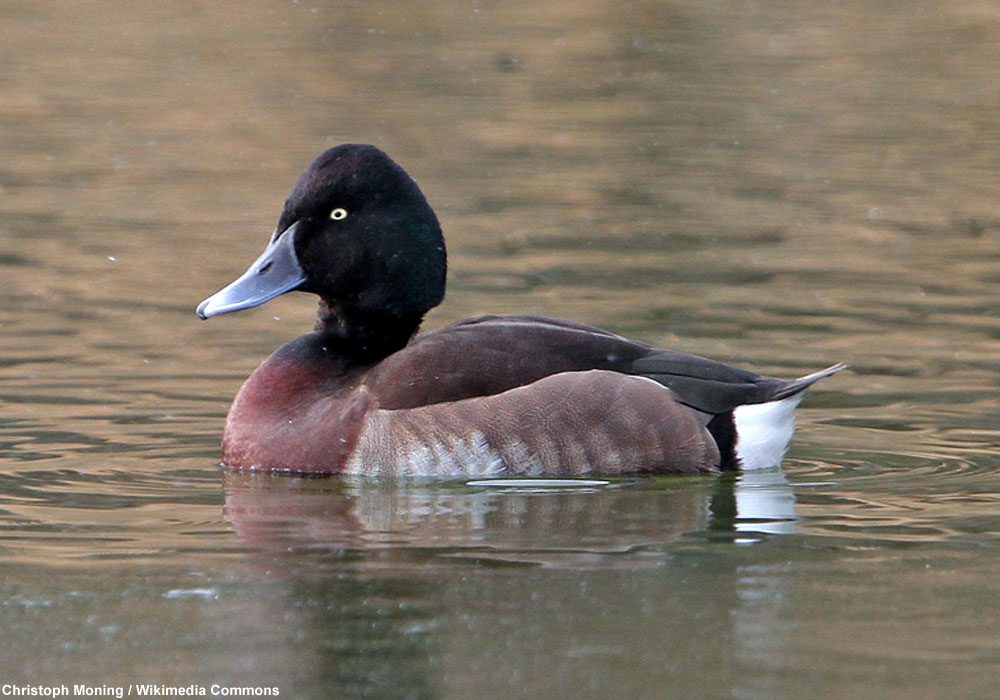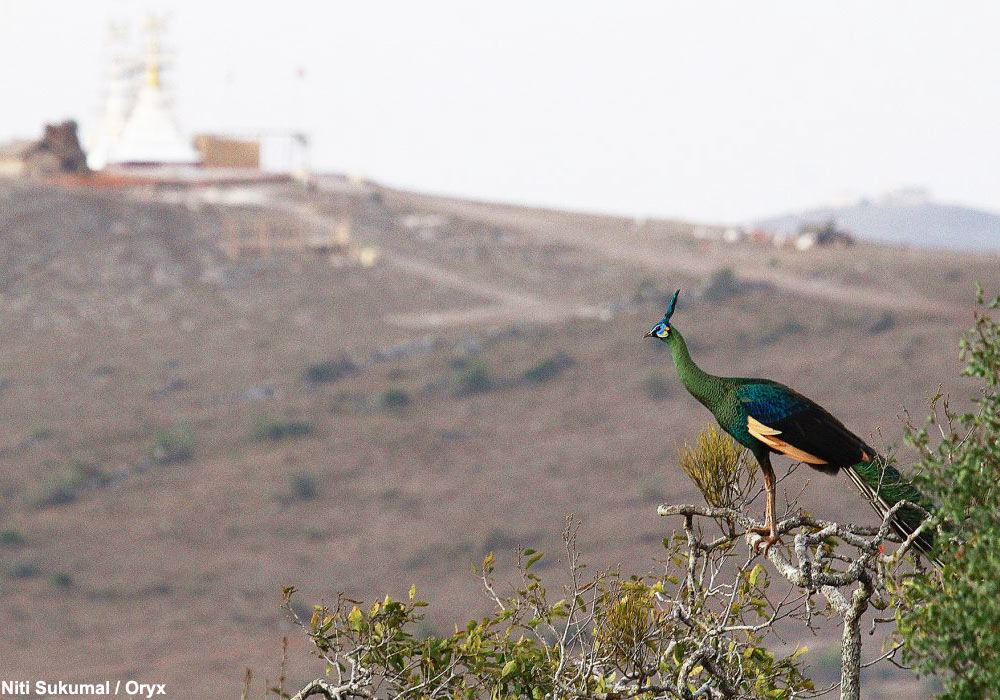Magazine | Interviews
Le Bangladesh accueillerait l’une des plus fortes densités de Pygargues de Pallas du monde

Pygargues de Pallas (Haliaeetus leucoryphus) adultes au Bangladesh.
Photographie : Sayam U. Chowdhury
Introduction
Le Pygargue de Pallas (Haliaeetus leucoryphus) est un grand rapace (envergure de 180 à 215 cm) peu connu : l’adulte se reconnaît à sa tête, sa gorge et sa poitrine chamois clair contrastant avec le reste du corps brun sombre et à sa queue blanche et noire. Le juvénile est entièrement brun, avec les plumes du dessus des ailes bordées de chamois.
Il niche à proximité des lacs ou des cours d’eau et se nourrit de proies variées (poissons, reptiles, batraciens, etc.), mais aussi de charognes. On a longtemps pensé qu’il y avait deux populations : l’une migratrice nichant du Kazakhstan à la Chine et l’autre sédentaire se reproduisant du Pakistan au Myanmar, mais selon des études récentes, l’espèce ne se reproduirait en fait qu’en Asie du Sud entre octobre et avril, une partie des oiseaux migrant en été au nord de l’Himalaya. Ce rapace est désormais considéré comme étant en danger et en déclin, avec moins de 2 500 individus dans le monde.
La situation exacte de l’espèce au Bangladesh étant mal connue, Sayam U. Chowdhury, Mohammod Foysal et Nazim Uddin Khan ont effectué des visites sur le terrain et interrogé des centaines d’habitants entre 2017 et 2020 dans les districts de Sunamganj et de Netrokona, situés dans le nord-est du pays, où vivent la quasi-totalité des Pygargues de Pallas du pays. Ils ont obtenu une estimation de 53 couples, soit davantage que ce que l’on pensait.
Après un résumé de leur étude publiée en décembre 2021 dans la revue Oryx, nous vous proposons une interview de Sayam U. Chowdhury, qui nous en dit plus sur les résultats obtenus.
Abstract
The Pallas’s Fish Eagle (Haliaeetus leucoryphus) is a little-known large raptor (wingspan: 180 to 215 cm): the adult is distinguished by its light buff head, throat and chest contrasting with the rest of the dark brown body and its white and black tail. The juvenile is entirely brown, with buff-edged upperwing feathers. It breeds near lakes or rivers and feeds on various prey (fish, reptiles, batrachians, etc.), but also carrion.
It has long been thought that there are two populations: one migratory breeding from Kazakhstan to China and the other sedentary living from Pakistan to Myanmar, but according to recent studies, this species only breeds than in Southern Asia between October and April, part of the birds migrating in summer north of the Himalayas. It is now considered endangered and declining, with an estimated global population of fewer than 2,500 individuals.
As the exact status of the species in Bangladesh is poorly known, Sayam U. Chowdhury, Mohammod Foysal and Nazim Uddin Khan conducted field trips and interviewed hundreds of locals between 2017 and 2020 in Sunamganj and Netrokona districts, located in the northeast of the country, where almost all of the country’s Pallas’s Fish Eagles live. They got an estimate of 53 pairs, i.e. more than expected.
After a summary of their study published in December 2021 in the journal Oryx, we propose you an interview with Sayam U. Chowdhury, who tells us more about the results obtained.
Poursuivez la lecture de cet article, en vous abonnant dès maintenant !
Découvrez les Archives d’Ornithomedia.com
Pour seulement 10,00 €TTC/an (ou 6,00 € les 6 mois)
Profitez de plusieurs centaines d’articles en accès illimité et sans aucun engagement.
Compléments
Contact
Sayam U. Chowdhury – Courriel : sayam_uc@yahoo.com
Ouvrages recommandés
- Field Guide to the Birds of Bangladesh de Richard Grimmett, Paul Thompson et Tim Inskipp
- Birds of Northern India de Richard Grimmett (Auteur), Tim Inskipp (Auteur)
- Birds of India: Pakistan, Nepal, Bangladesh, Bhutan, Sri Lanka, and the Maldives de Richard Grimmett, Carol Inskipp et Tim Inskipp (2012)
- Handbook of the Birds of India and Pakistan de Salim Ali (Auteur), Ripley S. Dillon (Auteur)
- Field Guide to the Birds of South-East Asia de Craig Robson
- Birds of South Asia: The Ripley Guide de Pamela C. Rasmusen et John C. Anderton
- Birds of South-East Asia de Norman Arlott
Sources
- Sayam U. Chowdhury, Mohammod Foysal et Nazim Uddin Khan (2021). Using community-based interviews to determine population size, distribution and nest site characteristics of Pallas’s fish eagle in north-east Bangladesh. Oryx. Date : 20/12. www.cambridge.org
- Sayam U. Chowdhury et Mohammod Foysal (2020). Pallas’s Fish-eagle Haliaeetus leucoryphus conservation project in Bangladesh. BirdingAsia. Volume : 34. Pages : 23–26. www.researchgate.net
- Martin Gilbert et al (2014). Distribution and status of the Pallas’s Fish Eagle Haliaeetus leucoryphus in Mongolia: a cause for conservation concern? Oryx. Date : 25/03. www.cambridge.org







Aucun commentaire sur ce sujet
Participer à la discussion !